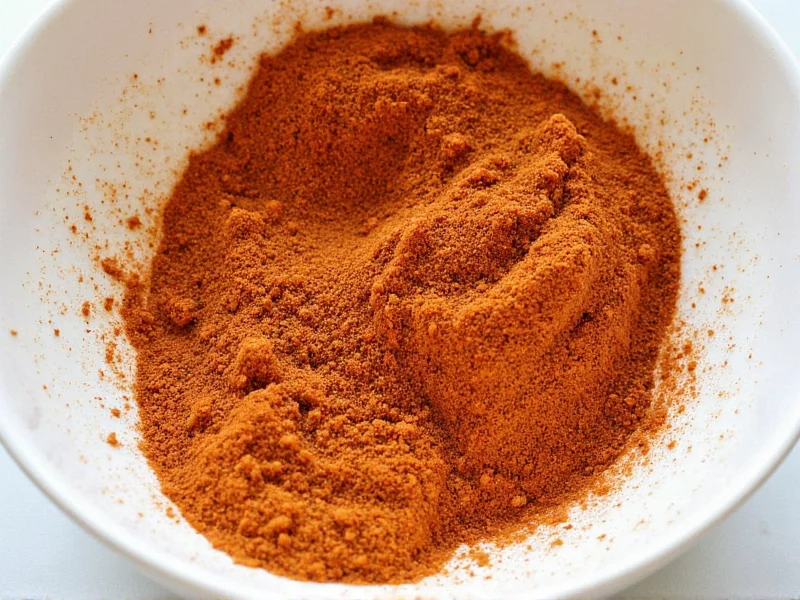Understanding what makes authentic nacho seasoning distinctive helps home cooks select quality products or create superior homemade versions. Unlike basic taco seasoning, traditional nacho seasoning incorporates dairy elements like cheddar cheese powder that deliver that familiar orange-hued cheese flavor associated with stadium-style nachos.
Core Ingredients in Quality Nacho Seasoning
The foundation of any good nacho seasoning blend combines specific spices in precise ratios. While recipes vary, the essential components include:
| Primary Ingredient | Flavor Contribution | Typical Percentage |
|---|---|---|
| Chili powder | Earthy base with mild heat | 30-35% |
| Cheddar cheese powder | Savory, tangy dairy notes | 25-30% |
| Garlic powder | Aromatic depth | 10-12% |
| Onion powder | Sweet complexity | 8-10% |
| Cumin | Warm, earthy backbone | 7-9% |
| Paprika | Color and subtle sweetness | 5-7% |
| Salt | Flavor enhancer | 4-6% |
Commercial Varieties vs Homemade Nacho Seasoning
Store-bought nacho seasoning offers convenience but often contains additives like maltodextrin, silicon dioxide (an anti-caking agent), and artificial colors. When selecting a commercial product, check for recognizable ingredients and minimal preservatives. Look for options labeled as gluten-free if that's a dietary concern, as many nacho cheese seasonings naturally contain gluten from wheat-based ingredients.
Creating homemade nacho seasoning gives you complete control over ingredients and flavor intensity. The basic ratio for a dairy-free version is:
- ¼ cup chili powder
- 2 tablespoons garlic powder
- 2 tablespoons onion powder
- 1½ tablespoons ground cumin
- 1 tablespoon paprika
- 1 tablespoon salt
- 1 teaspoon cayenne pepper (optional for heat)
For that authentic cheese flavor without artificial ingredients, add 3 tablespoons of nutritional yeast or finely grated dried cheddar powder. This homemade nacho seasoning recipe yields approximately 1 cup and keeps well in an airtight container for up to six months.
Practical Applications Beyond Nachos
While designed for tortilla chips, nacho seasoning's versatility makes it valuable in many kitchen applications. Consider these creative uses:
- Meat seasoning: Rub on chicken breasts or mix with ground beef for taco salads
- Vegetable enhancement: Toss with roasted potatoes or cauliflower
- Soup and dip base: Add to sour cream for instant nacho cheese dip
- Popcorn seasoning: Mix with melted butter for movie night snacks
- Egg boost: Sprinkle into scrambled eggs or omelets
When using nacho seasoning in liquid-based recipes like soups or sauces, add it early in the cooking process to allow flavors to meld properly. For dry applications like seasoning chips or popcorn, apply after cooking while the food is still slightly moist to help the seasoning adhere.
Nacho Seasoning vs Similar Blends
Understanding the differences between nacho seasoning and related spice blends prevents recipe mishaps. While taco seasoning shares many base ingredients, it lacks the cheese component that defines nacho seasoning. Fajita seasoning typically contains more citrus elements and less cheese powder. For those seeking mild nacho seasoning alternatives, reduce the cayenne content and increase the paprika for color without heat.
When substituting one for another, remember that nacho cheese seasoning ingredients create a distinct profile that won't be replicated by standard taco mix. For authentic nacho flavor without cheese (for vegan applications), increase the nutritional yeast and add a pinch of citric acid to mimic the tangy cheese notes.
Storage and Shelf Life Considerations
Proper storage maintains flavor integrity in both commercial and homemade nacho seasoning. Keep your blend in an airtight container away from heat and light. Glass jars with tight-sealing lids work better than plastic containers, which can absorb odors. The dairy components in cheese-based nacho seasoning typically reduce shelf life compared to pure spice blends.
Commercial nacho seasoning usually remains fresh for 12-18 months when unopened, while homemade versions last 6-8 months. Signs of degradation include faded color, diminished aroma, and clumping (beyond what's normal for the anti-caking agents present). For extended freshness, store in the refrigerator, especially if your blend contains real cheese powder.
What's the difference between nacho seasoning and taco seasoning?
Nacho seasoning typically contains cheese powder or cheese flavoring elements that give it the characteristic nacho cheese taste, while taco seasoning focuses on spices without dairy components. Nacho seasoning usually has a more pronounced cheesy, tangy profile compared to the earthier, spicier taco seasoning blend.
Can I make nacho seasoning without cheese powder?
Yes, you can create a dairy-free nacho seasoning using nutritional yeast for cheesy flavor notes, plus a small amount of citric acid to mimic the tanginess of cheese. This alternative works well for vegan applications while maintaining the characteristic nacho flavor profile.
How much nacho seasoning should I use per serving?
For standard applications like seasoning tortilla chips, use approximately 1-2 tablespoons of nacho seasoning per serving (about 1 ounce of chips). When incorporating into recipes like ground beef or soups, start with 1-2 teaspoons per pound of meat or per cup of liquid, adjusting to taste.
Is store-bought nacho seasoning gluten-free?
Not all commercial nacho seasonings are gluten-free, as some contain wheat-based ingredients or are processed in facilities with gluten. Always check the label for gluten-free certification if you have dietary restrictions. Many brands now offer specifically labeled gluten-free nacho seasoning options.
Understanding the composition and applications of nacho seasoning transforms how you use this versatile kitchen staple. Whether selecting a quality commercial product or crafting your own homemade nacho seasoning recipe, attention to ingredient quality and balance ensures authentic flavor in every application. The best nacho seasoning enhances without overwhelming, providing that distinctive cheesy-spicy profile that makes nachos and related dishes so appealing.











 浙公网安备
33010002000092号
浙公网安备
33010002000092号 浙B2-20120091-4
浙B2-20120091-4